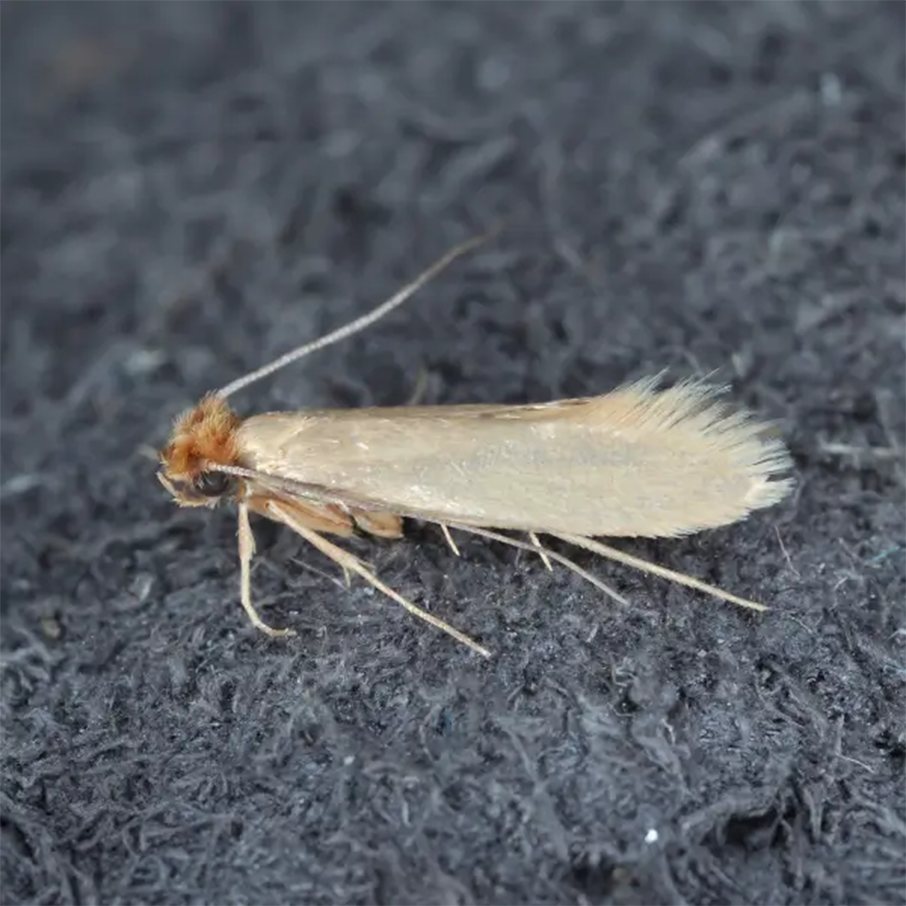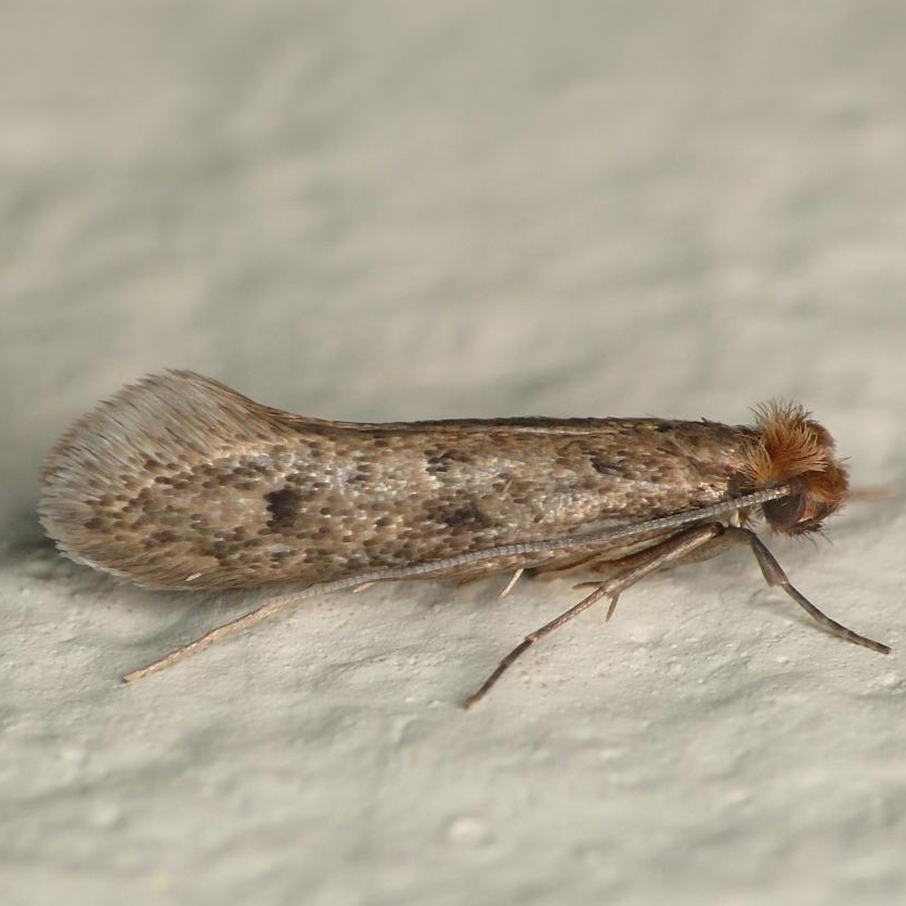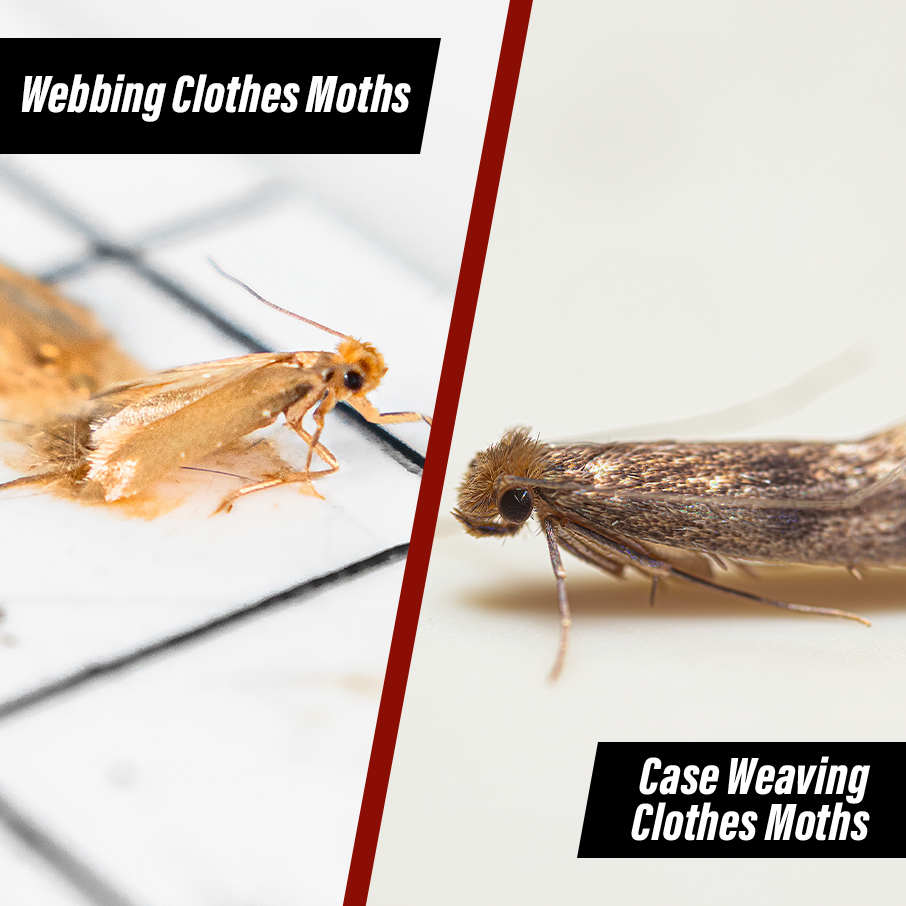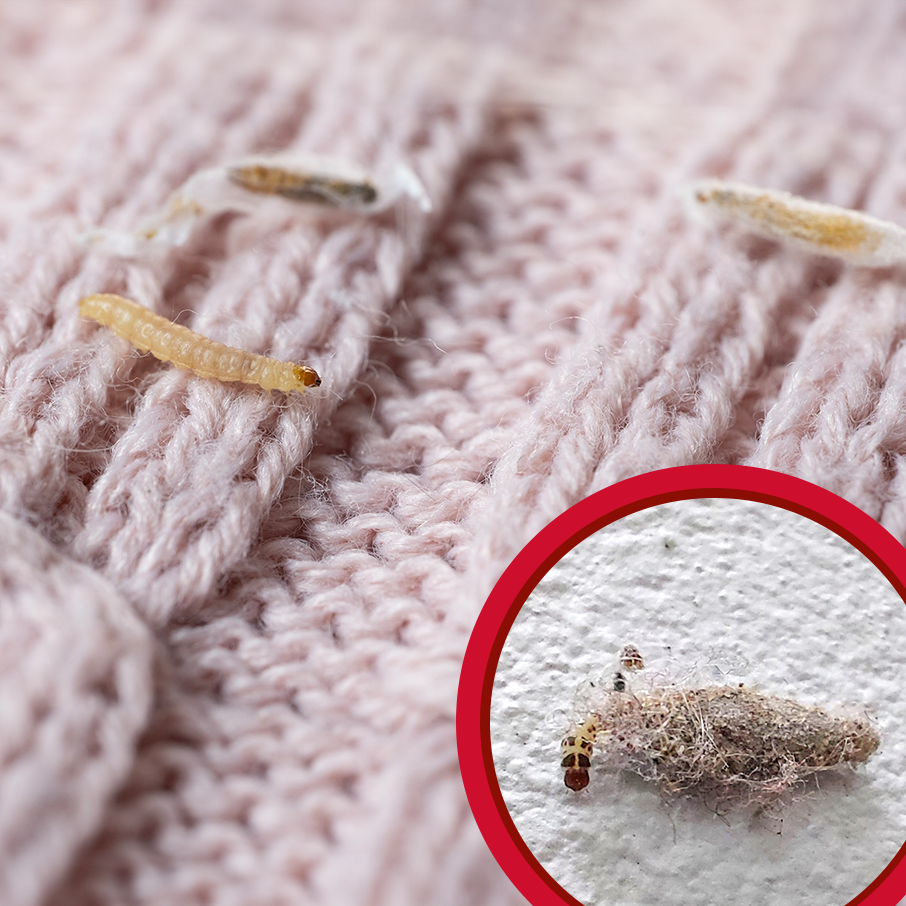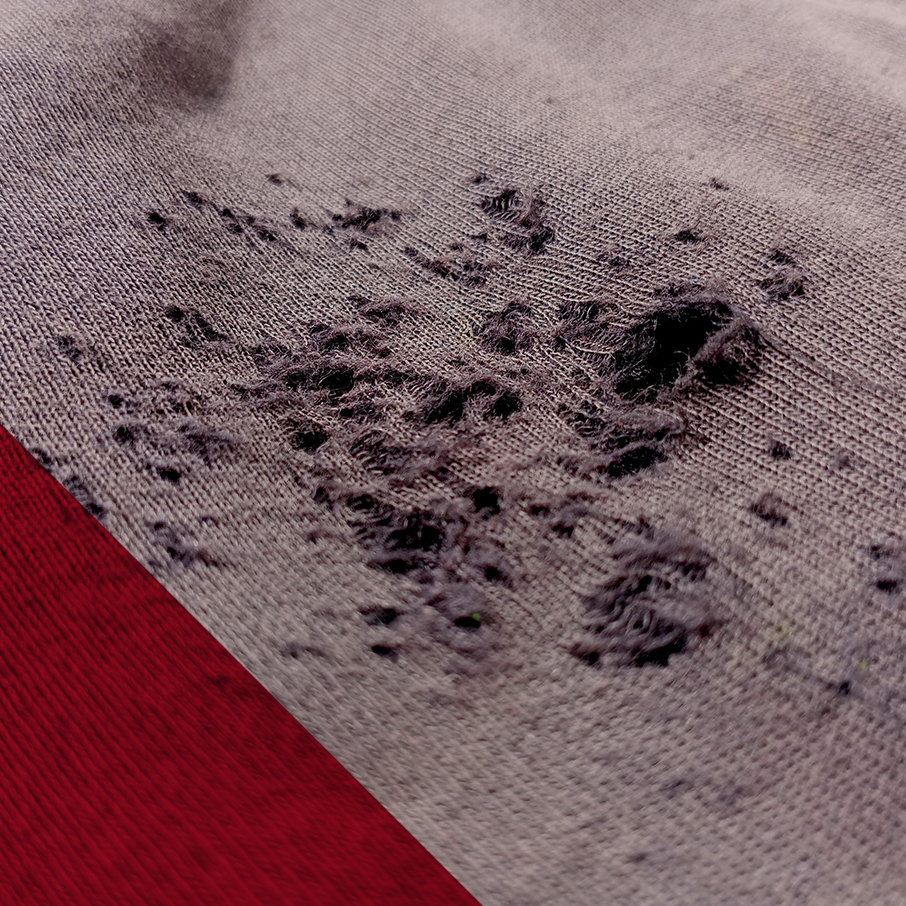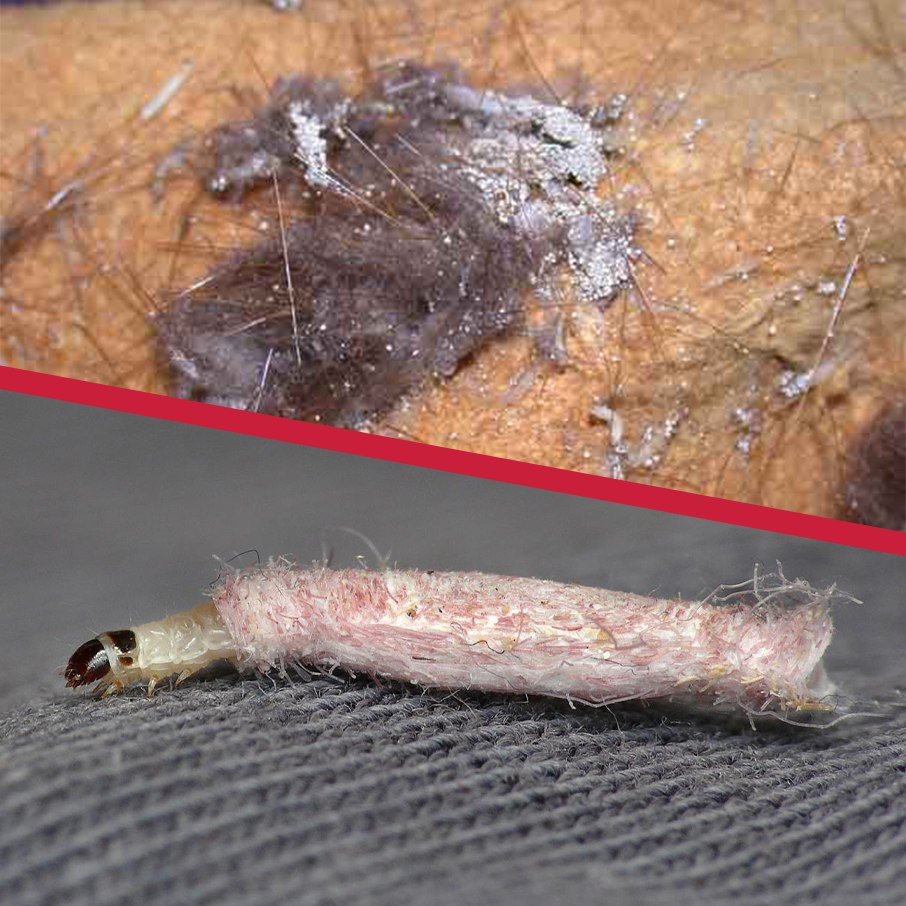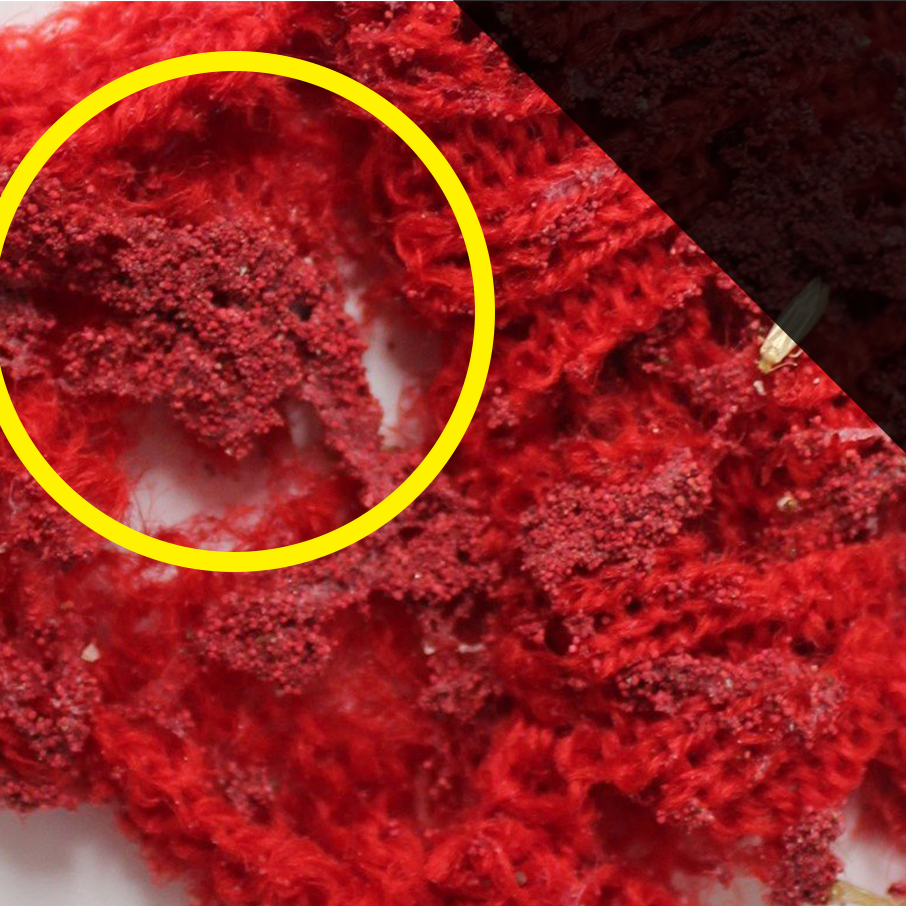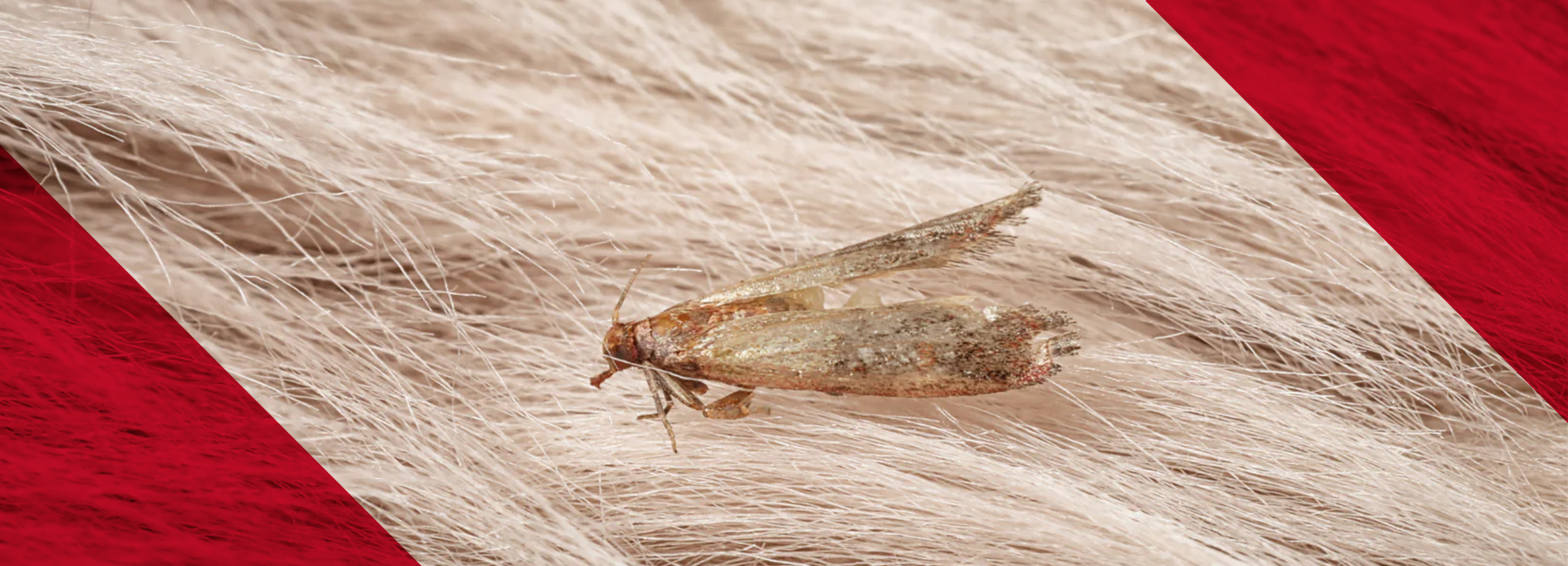
Do Moths Eat Clothes?
A Guide to Protecting Your Wardrobe.

Do Moths Eat Clothes?
Most moths are harmless, and many are even beneficial to the environment. They don’t bite, sting, or spread diseases and, for example, plant pollinators like the hummingbird moth play a vital role in the health of specific plant species. However, not all moths are so innocent. Some can devastate your food supplies, while others—like clothes moths—can infest your fabrics. If left unchecked, clothes moths can cause thousands of dollars in damage to clothing, upholstery, and other materials throughout your home. Let’s dive into how to stop them before it’s too late.
A Guide to Protecting Your Wardrobe.
Most moths are harmless, and many are even beneficial to the environment. They don’t bite, sting, or spread diseases and, for example, plant pollinators like the hummingbird moth play a vital role in the health of specific plant species. However, not all moths are so innocent. Some can devastate your food supplies, while others—like clothes moths—can infest your fabrics. If left unchecked, clothes moths can cause thousands of dollars in damage to clothing, upholstery, and other materials throughout your home. Let’s dive into how to stop them before it’s too late.
Do all moths eat clothes? No. But do some moths? Absolutely. When it comes to closet-dwelling pests, the main culprits are the Webbing Clothes Moth (Tineola bisselliella) and the Case-Weaving Clothes Moth (Tinea pellionella). These tiny invaders are the most common offenders responsible for the damage you see on your clothing and other fabrics.
What Do Clothes Moths Look Like?
-
Webbing Clothes Moths
The larger of the two most common clothing moths, they typically measure6-8mm in length. They are recognizable by their golden or light-brown color. They primarily feed on wool, cashmere, and silk. However, they’re not picky—these moths will also target blends of synthetic and natural fibers, making a wide range of fabrics vulnerable.
-
Case-Weaving Clothes Moths
Darker in appearance, with brown coloring and distinctive dark spots on their wings. They have a preference for animal-based fibers like wool and feathers, making them a threat to a variety of household items. If you have feather-filled pillows, it’s especially important to check these areas for signs of infestation.
It’s the larvae of both species that are responsible for damaging your clothes and other fabrics.
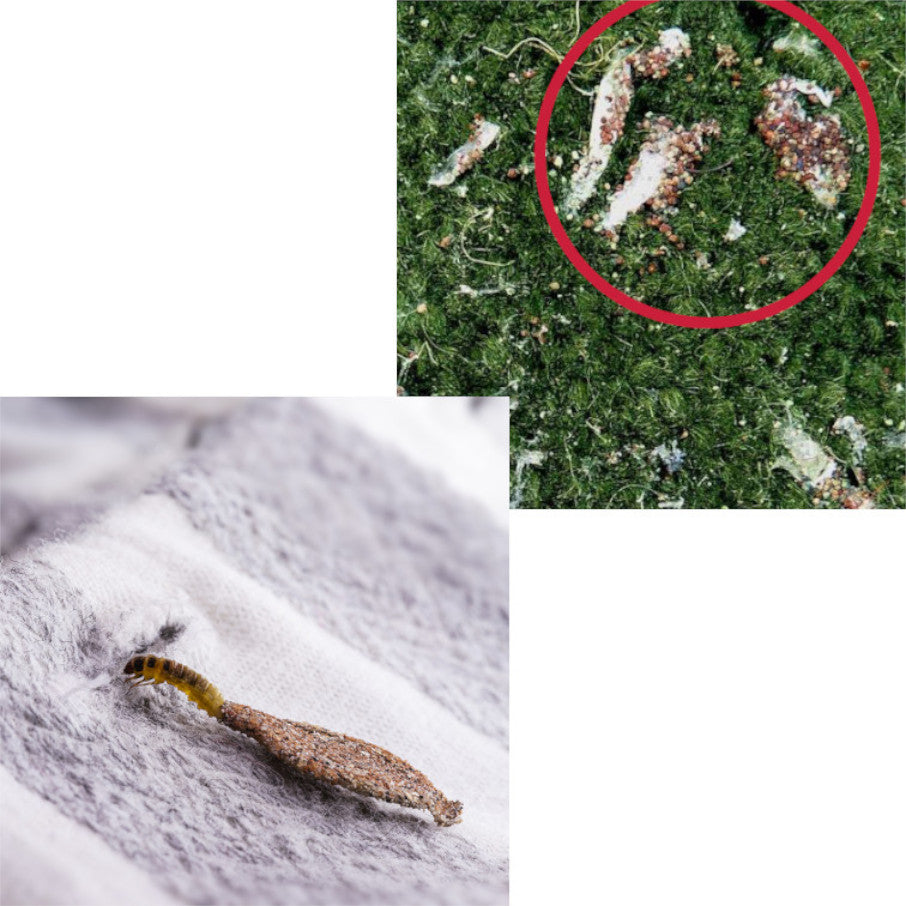
Webbing Clothes Moths leave behind distinctive silky webs (top right), often referred to as “tunnels,” as they feed on your clothing. Spotting these webs is a key sign that they’re the culprit. While they favor natural fibers like wool and silk, they don’t stop there. These moths can quickly spread to carpets, curtains, drapes, and upholstery, even targeting synthetic/natural fiber fabric blends in other areas of your home.
Case-Weaving Clothes Moths create protective casings (bottom left) from the fabric they consume, giving them both mobile shelter and camouflage from predators. If you notice these small, tube-like casings, it’s a clear sign of an infestation. These moths primarily feed on natural fibers like wool (including cashmere), silk, and feathers, putting your most expensive fabrics at the greatest risk.
Webbing & Case-Weaving Moths Prefer Natural Fibers.
Once you have an infestation of Webbing Clothes Moths or Case-Weaving Clothes Moths, few fabrics in your home are safe. Here’s what you need to know about their feeding habits:
1. Do moths eat silk clothes?
- Yes. Both species of moth larvae will eat silk because its natural fibers are rich in keratin, a digestible protein. Fabrics with body oils, sweat, or food stains become even more attractive to these pests.
2. Do clothes moths eat cotton?
- Generally, no. Cotton lacks keratin, making it less appealing. However, blended fabrics that combine cotton with animal fibers may still be consumed. Additionally, Case-Weaving Moths may use cotton as material for their casings, though the risk is lower compared to natural animal-based fibers.
3. Do clothes moths eat polyester?
- Rarely. Synthetic fibers like polyester are not a food source. However, blended fabrics with animal fibers are at risk, and polyester may occasionally be used as casing material by Case-Weaving Moths.
4. Other fabrics at risk:
- Woolen garments: Sweaters, coats, scarves, and socks.
- Cashmere and other high-value animal fibers.
- Furs: Including pelts, rugs, and taxidermy displays.
- Carpets and rugs: Wool or mixed-fiber rugs in dark, undisturbed areas.
- Blankets and throws: Especially those made of wool or natural fibers.
- Upholstery: Furniture with blended fabrics, curtains, and drapes.
- Feathers: Found in pillows or decorative items.
- Down products: Comforters, jackets, and other down-filled items.
- Dirty fabrics: Clothes with food stains, sweat, or body oils are prime targets.
Both types of clothes moths prefer natural, animal-based fibers, especially items that are soiled or undisturbed. Keeping fabrics clean, properly stored, and regularly inspected can significantly reduce the risk of infestation.
Clothing Moths are Subtle, But There Will be Signs.
The Solution: Clothes Moth Traps
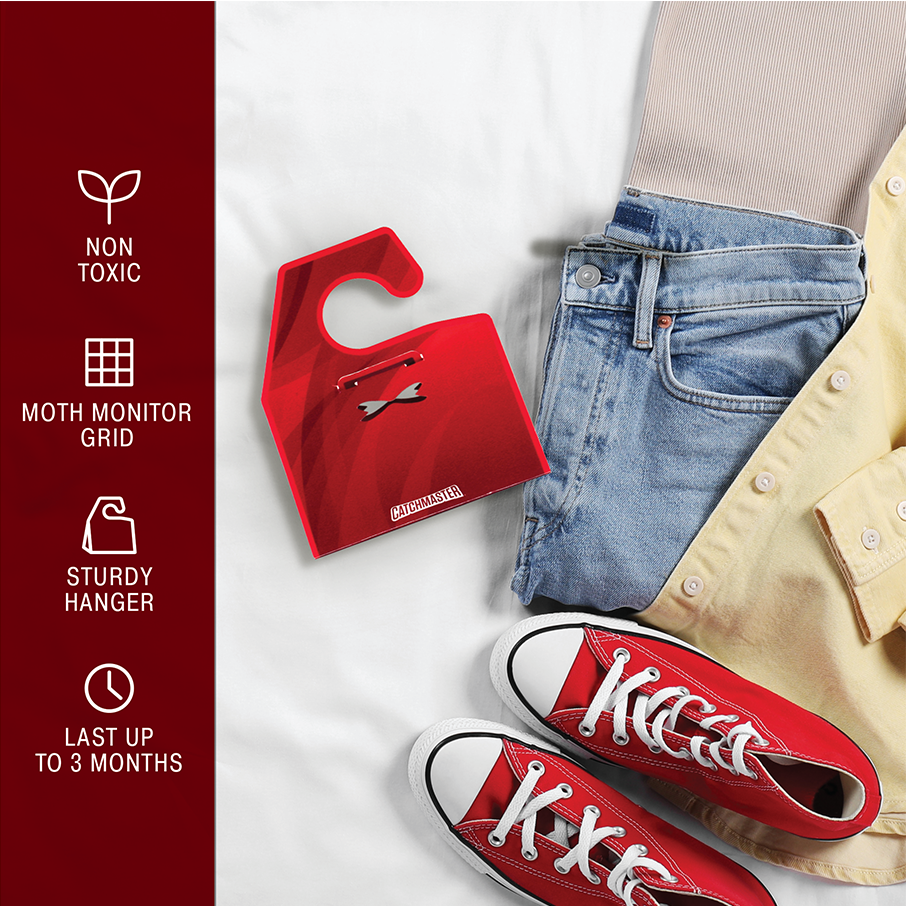
Catchmaster: Moth-Stopping Power
The key to controlling clothes moths is disrupting their breeding cycle by targeting and eliminating the male moths. Catchmaster’s Clothes Moth Traps are designed to do just that. Using a specialized pheromone, these traps lure male moths in and capture them on the adhesive surface of our legendary, professional-grade glue—trusted for over 70 years.

Clothes Moth Traps - Placement Tips
Using Catchmaster Clothes Moth Traps is simple—peel, fold, and place. For best results, remember that clothes moths walk more than they fly. Place traps on the ground, on shelves, and hang them on closet racks to catch moths wherever they hide. With Catchmaster, you get reliable protection and maximum peace of mind.
Catchmaster’s Clothes Moth Traps outperform competitors with 20% more glue on each trap, delivering unmatched moth-stopping power. Our glue is designed to ensure there is no escape, making it the trusted choice for eliminating moth invaders. Customers often tell us they’ve tried other traps only to encounter two common problems: smashed traps and traps that blended in too well with their surroundings. We’ve solved these issues with a sturdier, thicker, and heavier trap that’s not only more durable but also features an eye-catching, aesthetically pleasing design. This ensures the traps remain effective in your home’s conditions, are easy to locate, and remind you when it’s time to check or change them.
Conclusion
Most moths are harmless, but Webbing Clothes Moths and Case-Weaving Clothes Moths are the exception—they feed on clothing and other fabrics throughout your home. Signs of an infestation include seeing adult moths, larvae on clothing or fabrics, damage to materials, silken tunnels or webbing (from Webbing Moths), and small droppings or frass.
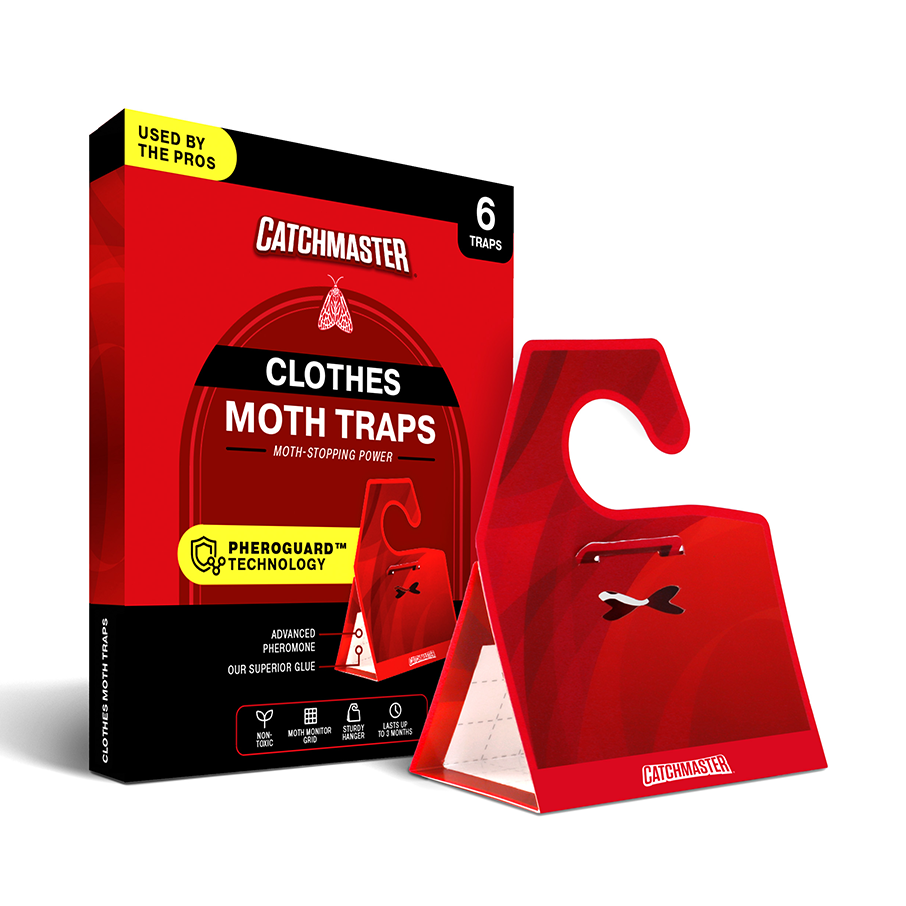
Catchmaster’s Clothes Moth Traps are the gold standard in moth-stopping power. Featuring a pheromone-based lure and our legendary glue formula, they attract and trap male moths to disrupt their breeding cycle.
With Catchmaster’s trusted tools, you can stop the moth invasion and protect your clothing and fabrics from further damage.
Key Takeaways
- Webbing & Case-Weaving Moth Larvae are responsible for most of the fabric damage due to moths.
- They eat all kinds of fabrics, not just clothing, and can spread all throughout your house if not dealt with quickly.
- Moths bring predators, mainly spiders, with them and they can cause distress and another mess for you to clean up.
- Catchmaster has the non-toxic, professional-grade glue traps that you need for dealing with both problems.
Thanks for reading - you’ve taken your first steps toward becoming a Catchmaster! Use code MOTHSTOPPINGPOWER at checkout to save 15% on Clothes Moth Traps.


